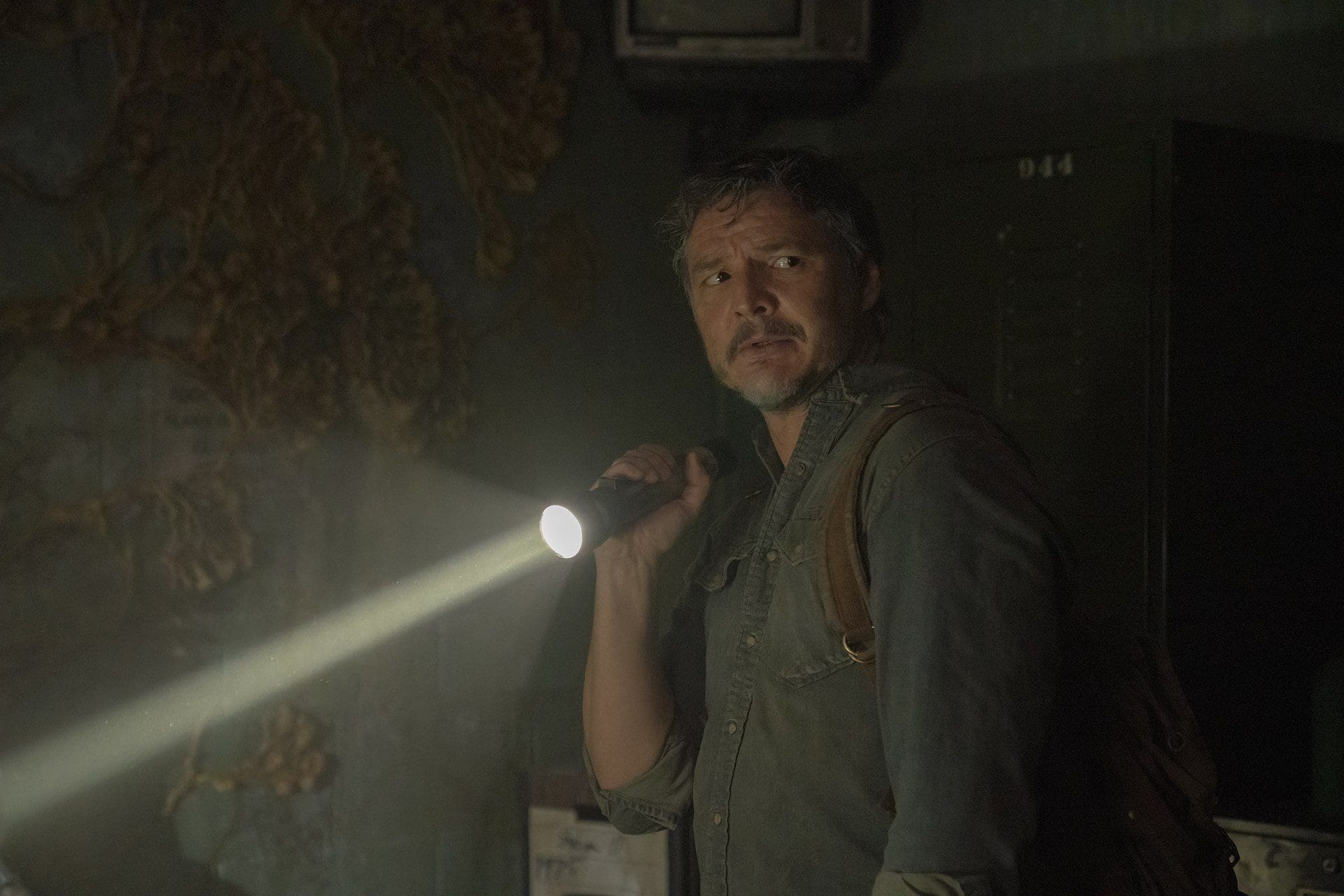
When The Last Of Us focuses on Sarah’s (Nico Parker, Dumbo) perspective of outbreak day for its first 30 minutes, it will almost feel like an extended edition for fans of the game. Some details show universal presumptions, like Sarah having breakfast or going to school. Others detail things fans know about, like Sarah going to a shop to get her father Joel’s (Pedro Pascal, The Mandalorian) watch fixed as a birthday present. Some are explicitly new, like her begrudging relationship with her elderly neighbors the Adlers (Mrs. played by Marcia Bennet, Mr. played by Brad Leland, Nana played by Wendy Gorling).
The way the episode juggles these presumed, known, and new elements does a great job of putting fans of the game and first-timers in a similar position. But speaking as a fan, I couldn’t escape my expectations defining the timing. I thought the whole episode might only focus on Sarah during outbreak day, but when Sarah visits the Adlers, a horrifying scene occurs. In conjunction with the knowledge of the tragedy awaiting Sarah and Joel, this creeping realization wasn’t just an objective understanding of the events that would transpire, like a math equation. Rather, this realization was sobering. It crept up on me, as it will other fans.
Most significant about these opening 30 minutes, though, is how it’s contrasted by the remainder of the episode in the form of adaptation. When you play as Sarah in the game, it barely qualifies as gameplay, more of a quasi-interactive cutscene. When you play as Joel 20 years later, the game must narratively justify its gunplay tutorials, kicking off this jump in time with Joel and Tess (played in the show by Anna Torv) pursuing their old “friend” Robert and killing any of his cronies that stand in the way. Since there’s no gunplay to tutor audiences on, and no need to stick with Joel’s perspective, the writers of the show have more dramatic freedom, and it’s here that the distinction in medium comes about.
We get a better look at Joel and Tess’ daily lives and the way the quarantine zone functions, and the shifted dynamics illuminate new elements. When we’re introduced to Tess and Robert, it’s not Tess chasing Robert, but Tess at Robert’s mercy. Even with the shifted power dynamic, he’s still the pathetic weasel we know from the game, utilizing his position of power as his cronies stand over her to say “promise you won’t get revenge on me.”
With this shifted dynamic, we get to see Tess’ characterization come out in a new way, showing her talk her way out of being killed. Conversely, we see the relationships Joel has made to survive in this QZ. He deals with a FEDRA guard, smuggling drugs in exchange for rations and favors. He must have a history with the radio operator, as he’s able to cut in front of a massive line to ask about messages from his brother Tommy (Gabriel Luna, Agents of S.H.I.E.L.D.). We also see him drink the pain away in that classically tragic masculine way that’s apt for this neo-western.
During all this time in Boston, we have yet to see Joel so much as throw a punch (there is, after all, no gunplay tutorial), but this doesn’t mean we’re not aware of his capability. Joel’s temper is the main reason Robert won’t let Tess go, and Tess has to keep his temper at bay, asking him not to go “all Clint Eastwood.” His rage is the bomb under the table, and we don’t know when it will go off.
The bomb, of course, will go off, but not until we meet Ellie (Bella Ramsey, Game of Thrones). In the game, we don’t meet her until Marlene (Merle Dandrige, reprising her role from the games) introduces Joel to her, but in the show, we get a glimpse of life right before Joel. She’s chained in a guarded room, being asked questions to test her sanity. In their first scene, the script and Ramsey do a good enough job communicating Ellie’s sarcastic, rebellious self. She’s asked to count from 1-10 slowly, and by the end, replaces 8 and 9 with profanity. Fans and newcomers will see this and say “Okay, I get her”, but it’s a moment in her second scene that will really sell audiences on her. When talking with Marlene, Marlene reaches for Ellie’s hand, and Ellie pulls her hand back with lightning-fast reflexes. This motion has the primal reflexes of a rabbit escaping a predator and, despite being defensive, will register like she pulled a knife to the audience’s throat.
When she’s introduced to Joel, he pulls a gun on Marlene, disarms Ellie, and puts his foot on her knife with the same speed as Ellie’s defensive motion. Despite being at odds at this moment, this lays the foundation for their eventual, complementary relationship, but the show does a magnificent job of establishing the potential danger of that complementarity in its final moment. In this last moment, both Joel and Ellie get a chance to show their violent side. The bomb goes off. Someone takes aim at Ellie, and Joel doesn’t stand for it. However, while Joel is in the right for defending Ellie, he’s also aware of the danger that comes with both the violence and the delight Ellie takes in what Joel does.
It’s in this final, tense moment that The Last Of Us embraces the core identity of the franchise, as well as the distinction in the new medium. Without a gunplay tutorial, it was able to build up to this last, ferocious act that embeds the protective relationship at the heart of the franchise. Still, it does so with a haunting uncertainty, and it’s this haunting uncertainty that will keep both fans and newcomers on the edge of their seats.


Comments are closed.